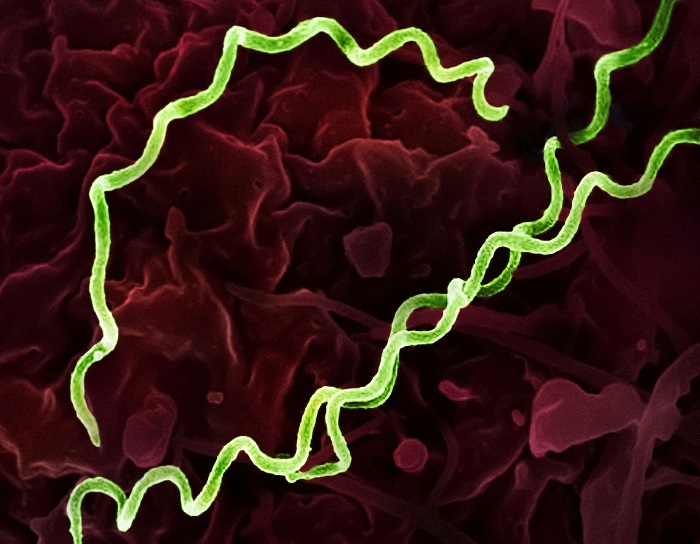A horse has been confirmed to have Equine Herpes in Gem County. It’s essential to take the necessary precautions to prevent the spread of the virus to other horses. Equine Herpes in horses is caused by the equine herpes virus (EHV), which can be highly contagious among horses.
It’s essential to isolate the infected horse and any other horses that may have come into contact with it. Horse owners and caretakers should also practice appropriate biosecurity measures, such as washing hands thoroughly, using separate equipment for each horse, and monitoring horses for any signs of illness.
It’s also essential to consult with a veterinarian for guidance on treatment and prevention measures. Vaccination for EHV is available, and your veterinarian can advise on the appropriate vaccination schedule for your horse.
Overall, taking proactive steps to prevent the spread of herpes in horses is vital to maintaining the health and well-being of all horses in the community.
It’s good to hear that the Idaho State Department of Agriculture is taking proactive measures to address the confirmed case of herpes in a horse in Gem County. As they suggest, implementing preventative biosecurity measures is crucial in preventing the spread of the virus.
What is “Equine Herpes”?
Equine herpes is a viral infection caused by the equine herpes virus (EHV), which can affect horses, donkeys, and mules. There are several strains of EHV, but the two most common types that affect horses are EHV-1 and EHV-4.
EHV-1 is typically associated with respiratory disease, neurological disease, and abortions in pregnant mares. EHV-4 is primarily associated with respiratory disease but can cause abortions in pregnant mares. Both types of EHV can cause mild to severe symptoms in horses, and the severity of the disease can depend on the horse’s age, immune system, and overall health.
EHV is highly contagious and can spread quickly from horse to horse through direct contact with nasal secretions, saliva, or other bodily fluids. The virus can also be spread indirectly through contaminated equipment, feed, water, or bedding.
Preventative measures, such as good biosecurity practices and vaccination, can help reduce horses’ risk of EHV infection. It’s essential to consult with a veterinarian if you suspect that your horse may be infected with EHV or if you have any questions about preventative measures.
Some preventative measures that horse owners and caretakers can take include:
- Isolation: Isolate any horse that is exhibiting symptoms of herpes or has been in contact with an infected horse. This will help prevent the spread of the virus to other horses.
- Cleanliness: Keep the stable or facility clean and disinfected. Clean and disinfect all equipment between uses, such as water buckets, feeders, and grooming tools.
- Hand hygiene: Wash your hands with soap and water before and after handling horses. Encourage others who handle horses to do the same.
- Limit exposure: Limit the number of horses in contact with each other, and avoid sharing equipment between horses.
- Vaccination: Consult a veterinarian to develop a vaccination plan for your horses. Vaccination can help prevent the spread of herpes and minimize the severity of symptoms if a horse does become infected.
By taking these measures, horse owners and caretakers can help minimize the spread of herpes and keep all horses in the community healthy.
Data Collection and Analysis: The Pillars of Informed Decision-Making
In the face of the Equine Herpes outbreak, accurate and timely data becomes the bedrock upon which effective interventions are built. Here’s why:
- Real-time Monitoring: Establishing a robust surveillance system allows for the immediate detection of new cases, helping in swift responses.
- Trend Analysis: By identifying patterns and hotspots, authorities can allocate resources more efficiently and prioritize areas most in need.
- Risk Assessment: Understanding the spread dynamics, transmission routes, and susceptible populations aids in crafting targeted strategies.
Collaborative Efforts: Unity in Expertise and Action
Addressing the Equine Herpes outbreak is not a solitary endeavour. The synergy of various stakeholders amplifies the impact of interventions:
- Veterinary Insights: Veterinarians play a pivotal role in diagnosing, treating, and preventing the disease. Their on-ground experience provides invaluable insights into the outbreak’s nuances.
- Research Contributions: Continuous research can unveil novel aspects of EHV, from its genetic variations to potential treatment modalities. Collaboration with academic institutions and research bodies can accelerate these discoveries.
- Equine Organizations often serve as the backbone of the equestrian community. Their resources, networks, and advocacy can galvanize support, disseminate crucial information, and foster unity during these testing times.
Resilience and Adaptation: Thriving Amidst Challenges
The Equine Herpes outbreak presents challenges, but within them lies the opportunity for growth, innovation, and solidarity:
- Adaptive Strategies: As the situation evolves, so must our strategies. Flexibility in approach, backed by a willingness to iterate and refine, ensures that interventions remain effective.
- Innovative Solutions: The equestrian community has consistently demonstrated resilience and innovation. Creativity will be a crucial asset, whether it’s devising new biosecurity measures, leveraging technology for remote consultations, or organizing virtual equestrian events.
- Community Support: At its heart, the equestrian world thrives on community spirit. By rallying together, sharing resources, offering assistance, and standing in solidarity, the community can emerge more assertive, cohesive, and better prepared for future challenges.
Conclusion
The Equine Herpes outbreak in Gem County reminds us of the importance of proactive health management and community cooperation. By taking swift and decisive action, we can mitigate the virus’s impact and safeguard our equine companions’ well-being. Stay informed, stay vigilant, and let’s work together to protect our horses and the broader equestrian community.




